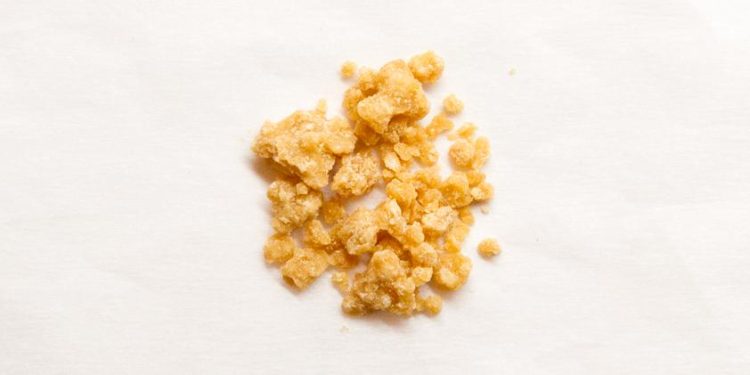The world of cannabis concentrates is exploding. Freed from the tight restraints of state laws, legal suppliers are creating inventory for the mass of dispensaries that have popped up in recent years. Cannabis consumers have a variety of potent extracts to choose from. Browsing dispensary shelves can be confusing. Budder or shatter: which one should you buy?
Let’s take a look.
Budder
Budder is a waxy concentrate typically extracted with propaneor butane. The solvents extract cannabinoids and other molecules from the plant material, thereby concentrating these molecules. The resulting oil can be manipulated a variety of different ways.
To create budder, the oil is whipped just after the extraction process, making the product airy or fluffy. The agitation causes THCA to precipitate from the oil, and crystallize. The difference in consistency results from this precipitation. Budder is malleable, since it has a high wax content.
Shatter
Shatter is hugely popular. It’s become an art form; the thin, golden or amber shards can appear striking. The initial stages in the creation process are often identical to those needed to create budder. Shatter actually can degrade to budder over time.
Like budder, the cannabinoids crystallize in the concentrate oil, and the consistency changes and becomes waxier. The types of molecules in the shatter will dictate the consistency, and whether it is like a sticky sap, or taffy, or whether it is in a sheet that looks like colored glass and will “shatter” if dropped or struck. These latter types of shatters tend to have less terpenes, since terpenes will act as a solvent, resulting in a more viscous liquid, as opposed to solid form. Shatter can also have a taffy-like consistency, if not purged thoroughly.
Budder and shatter can both please discriminating cannabis consumers. Shatter tends to have a higher THC content but both concentrates have been tested at over 90% THC. A recent study claimed that higher levels of THC led to more symptoms of cannabis use disorder (CUD). (1) CUD is defined as “the continued use of cannabis despite clinically significant distress or impairment which usually includes: a strong desire to take cannabis, difficulties in controlling its use, persisting in its use despite harmful consequences, a higher priority given to cannabis use than to other activities and obligations, increased tolerance, sometimes a physical withdrawal state”. (2) The study appears to have only considered cannabis users, and did not have a control group of cannabis-free participants. The exact ramifications of CUD on health have yet to be elucidated.
References:
- Bidwell, et al, “Exploring cannabis concentrates on the legal market: User profiles, product strength, and health-related outcomes”, Addictive Behavior Reports, 2018, vol 8, open access. (impact factor=2.11; citations not yet available)
- https://www.mentalhealth.com/home/dx/cannabisdependence.html











